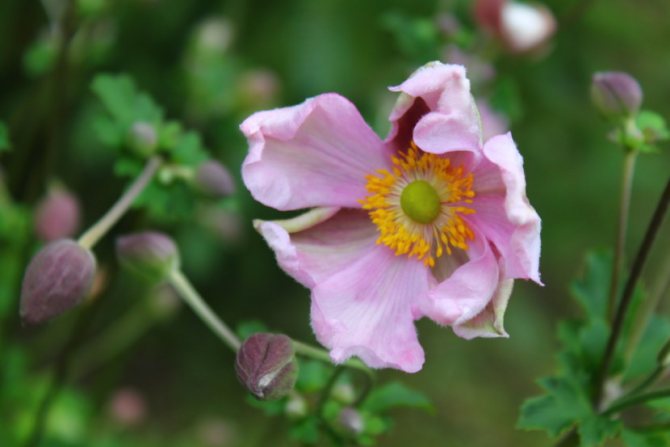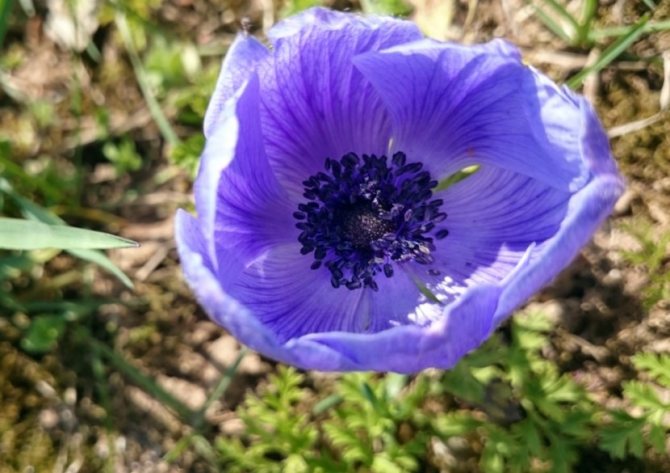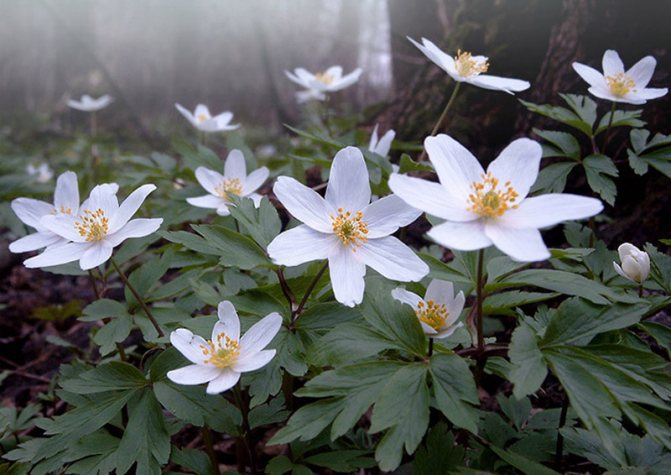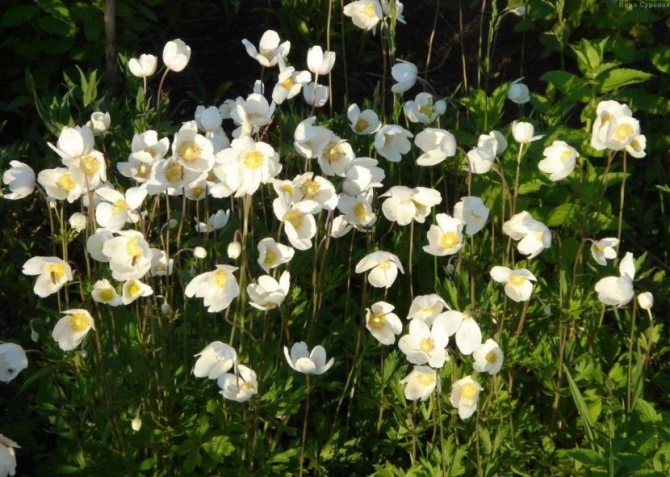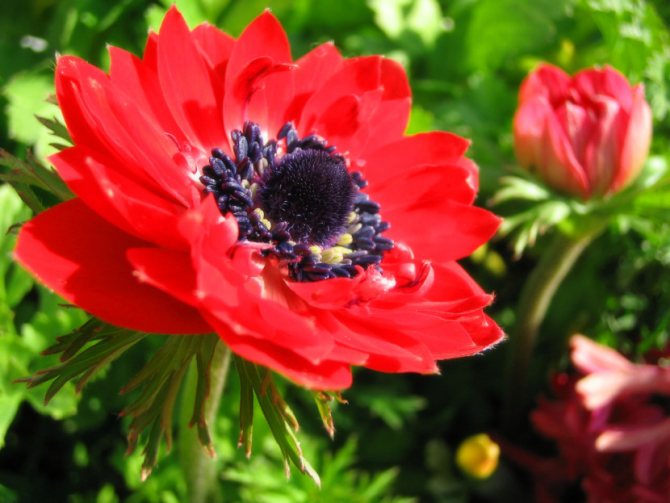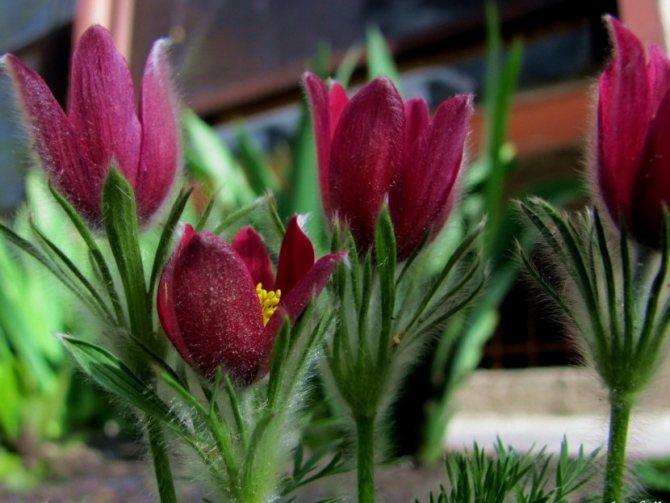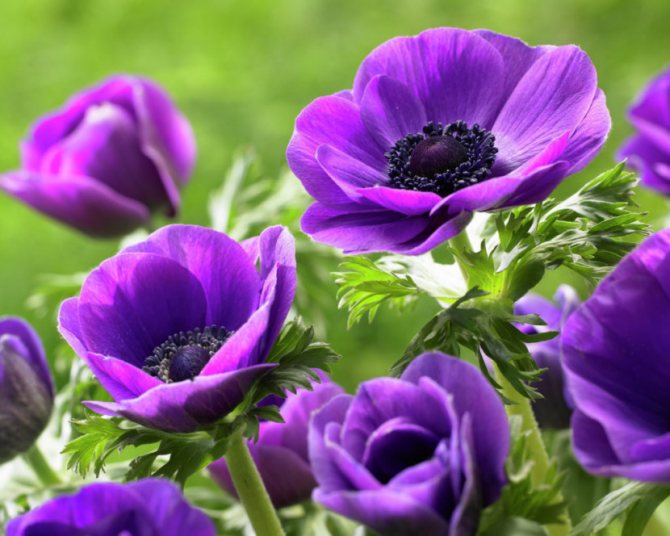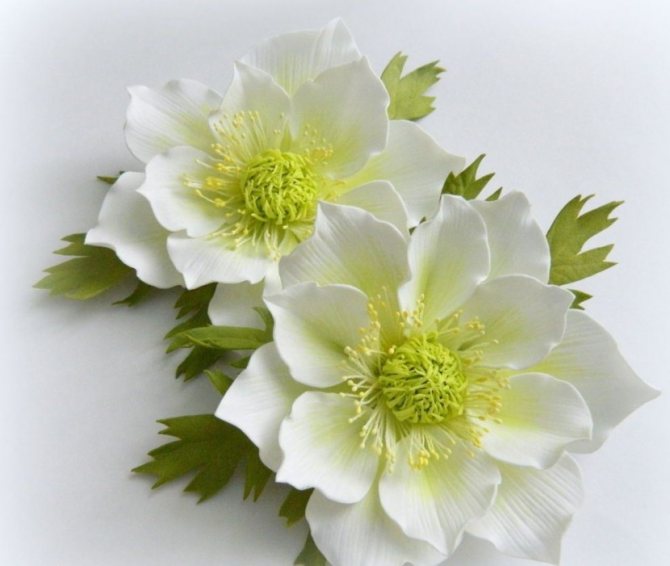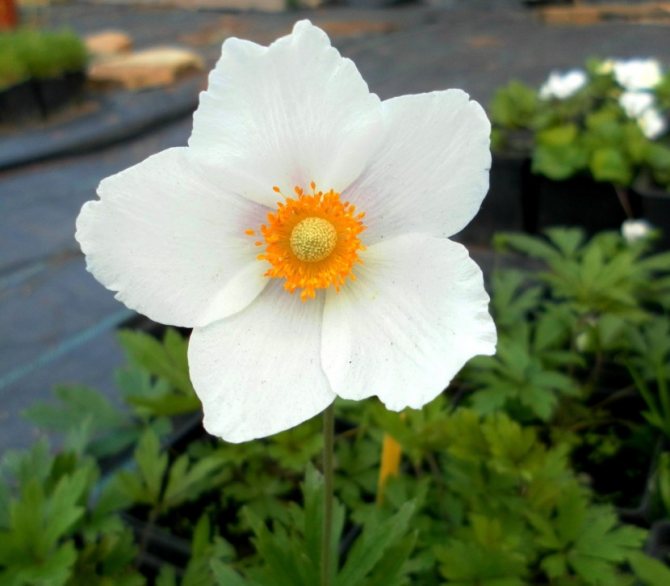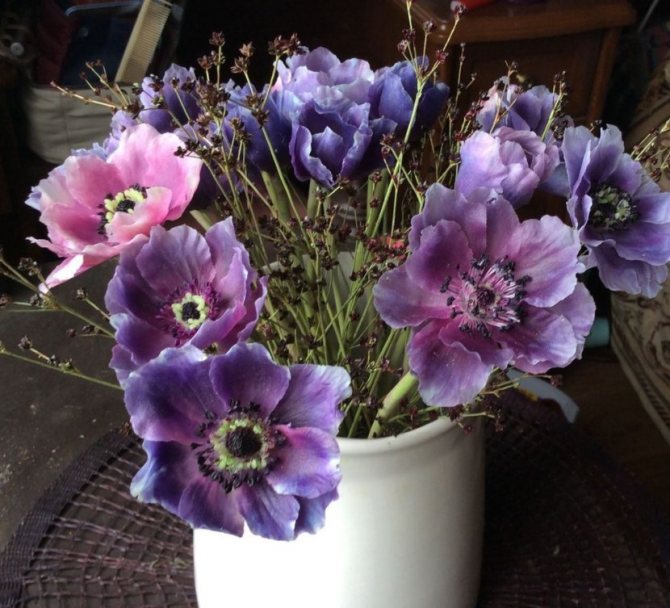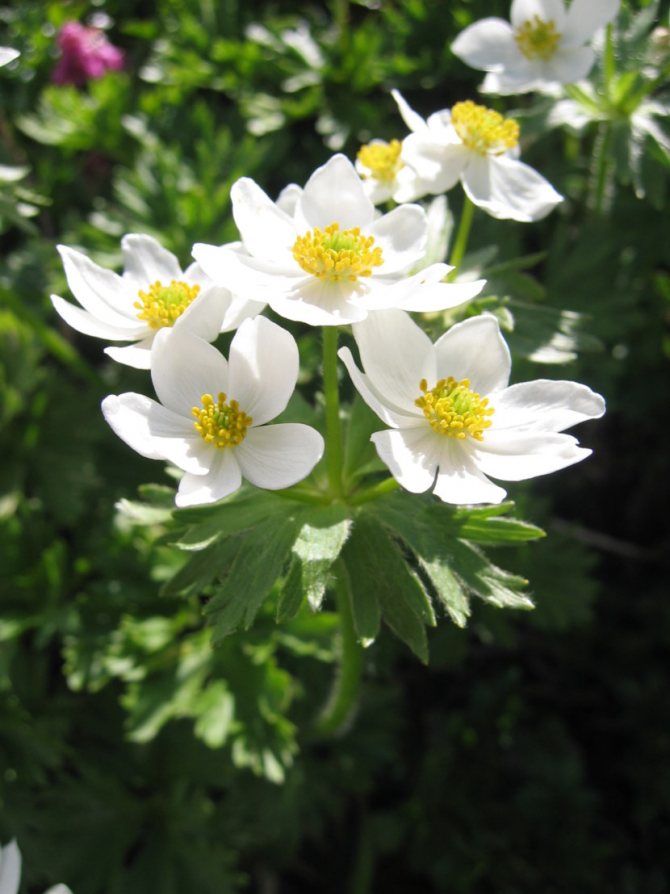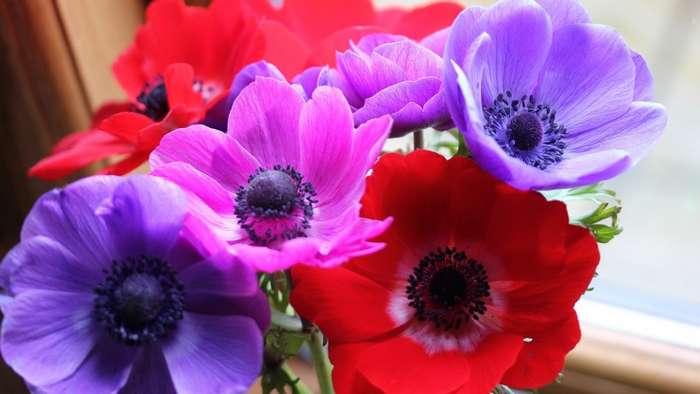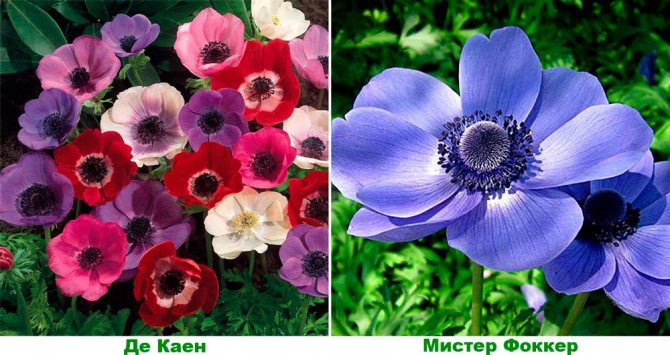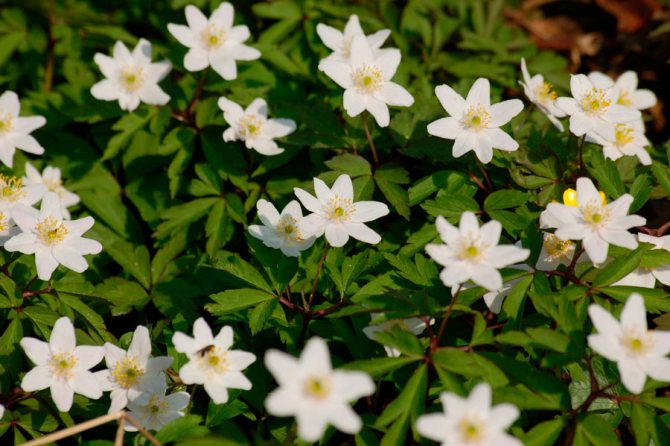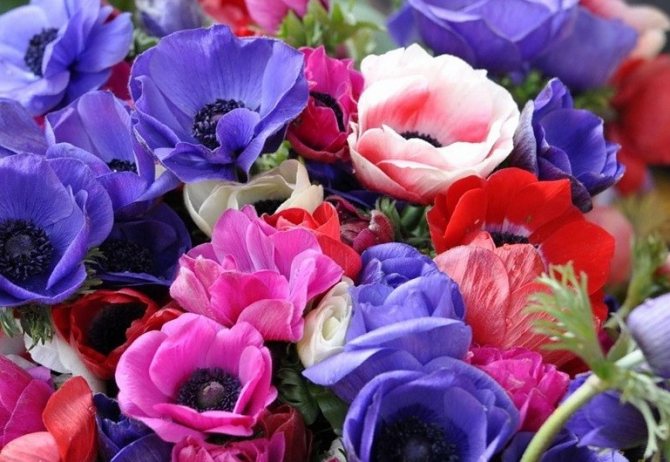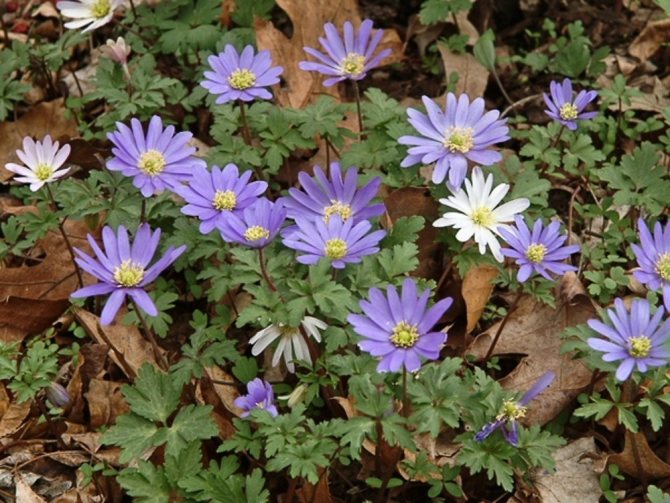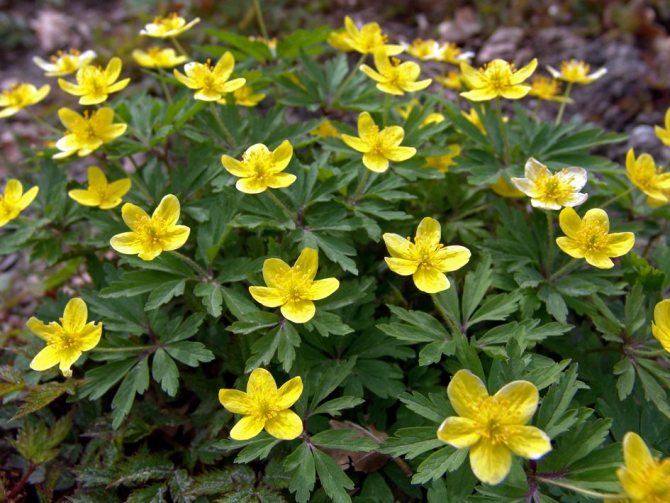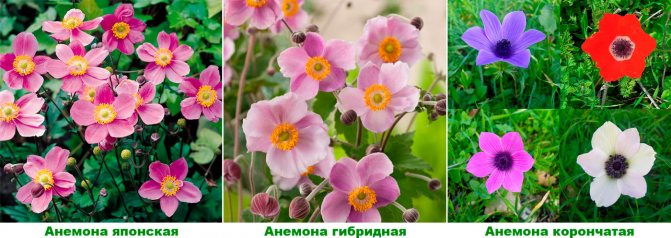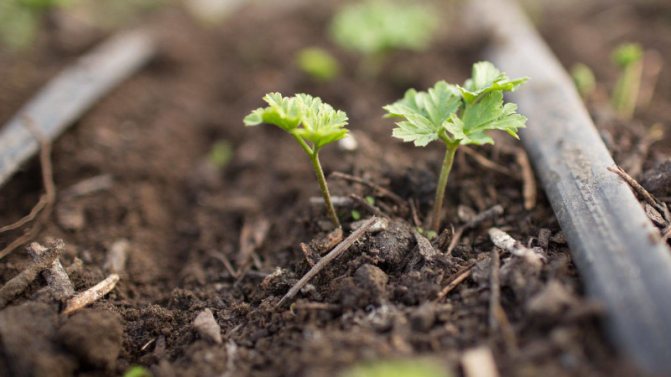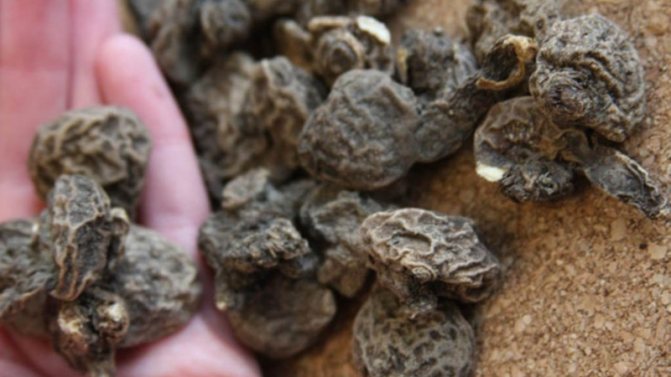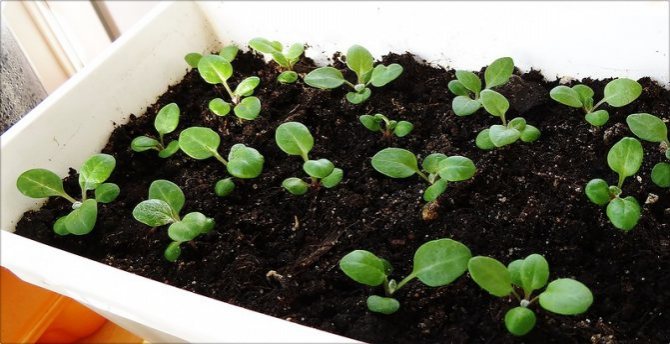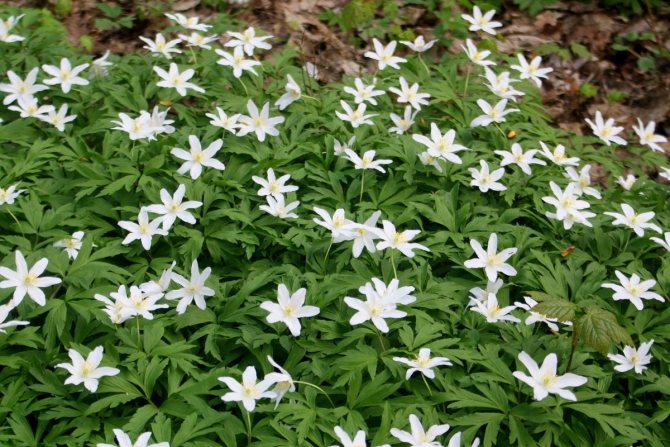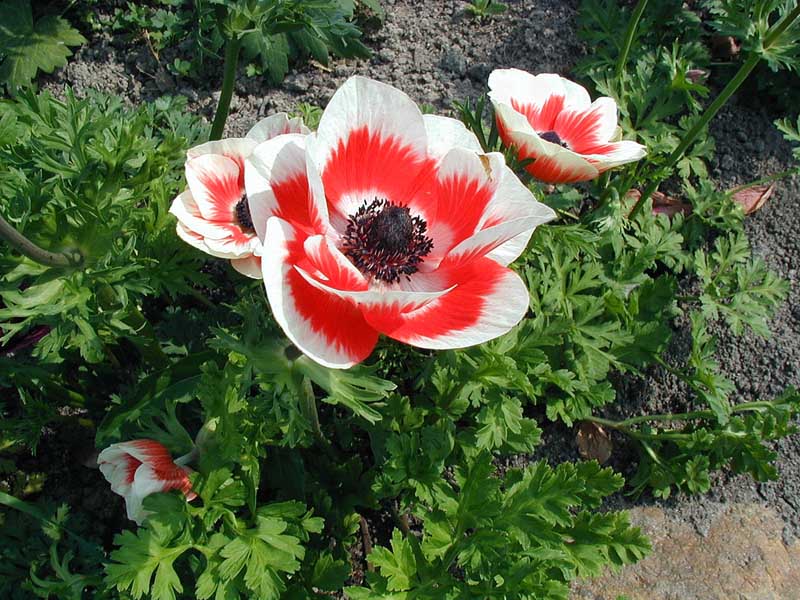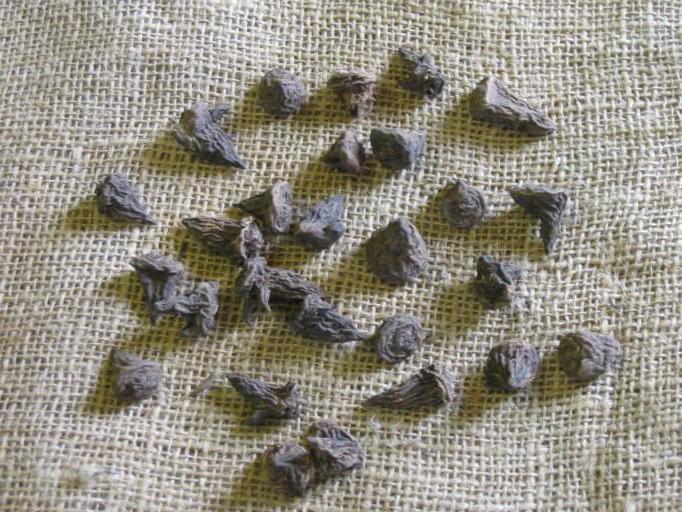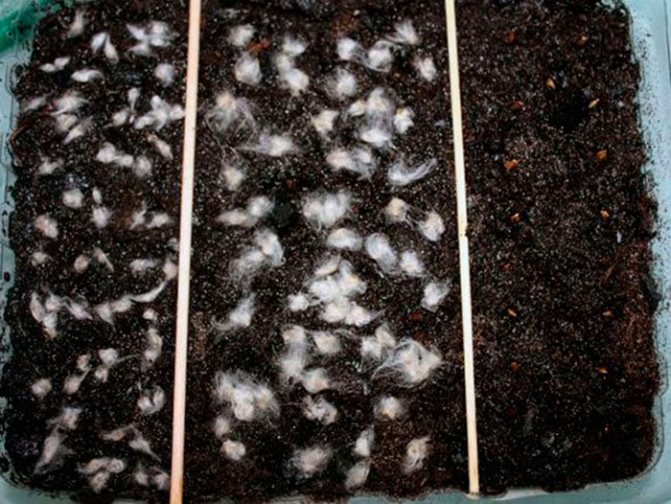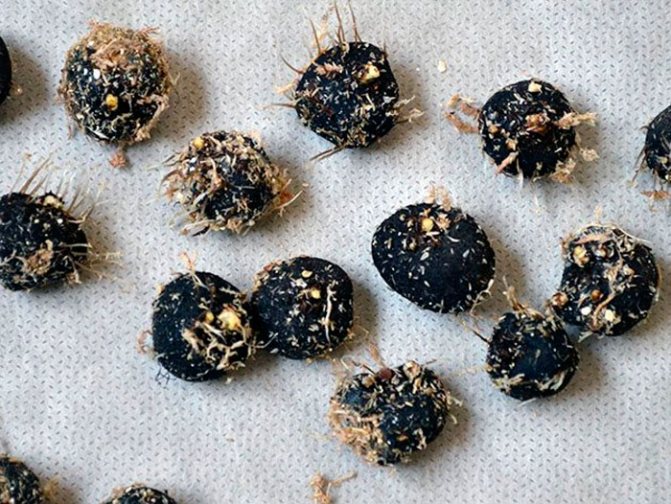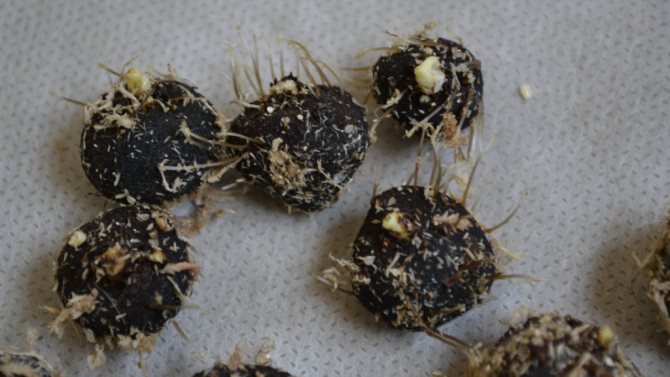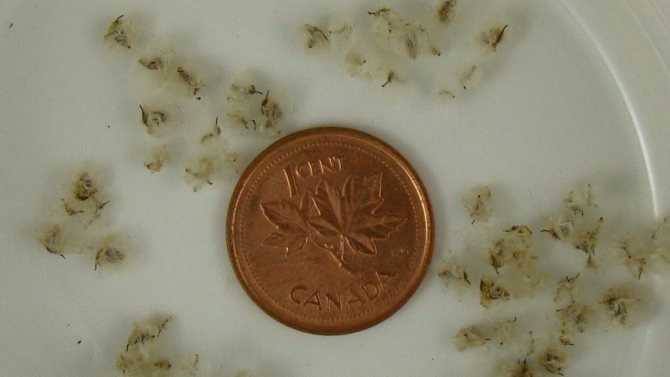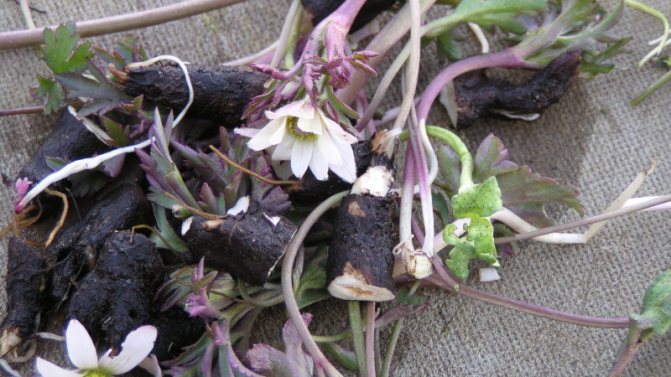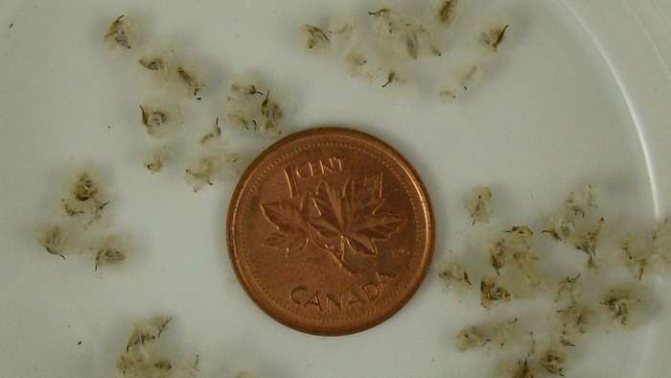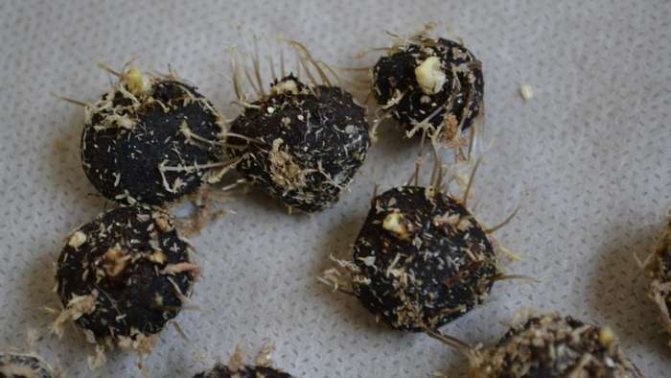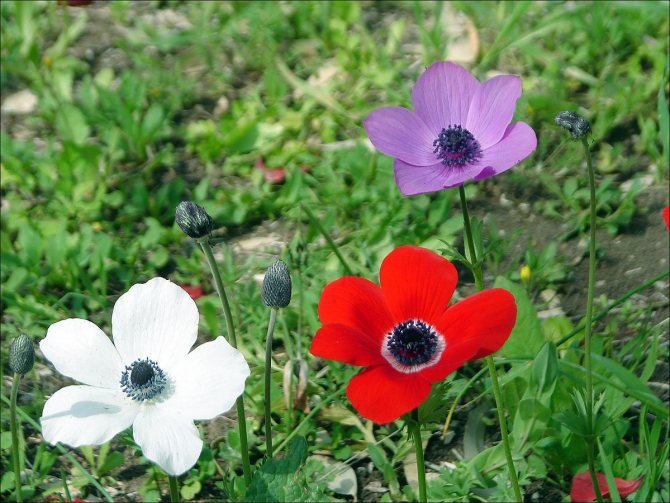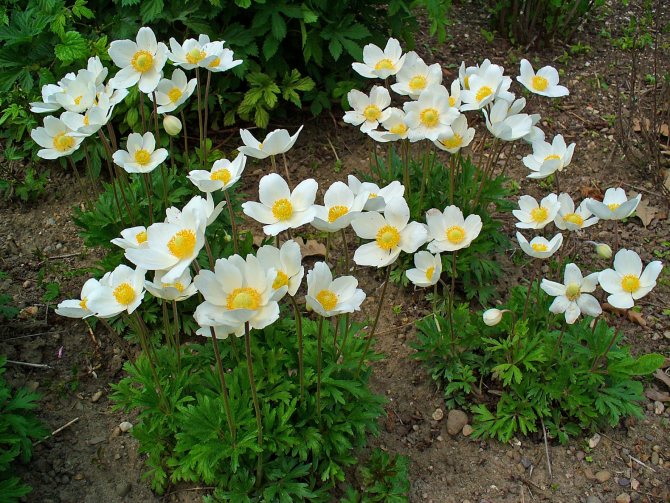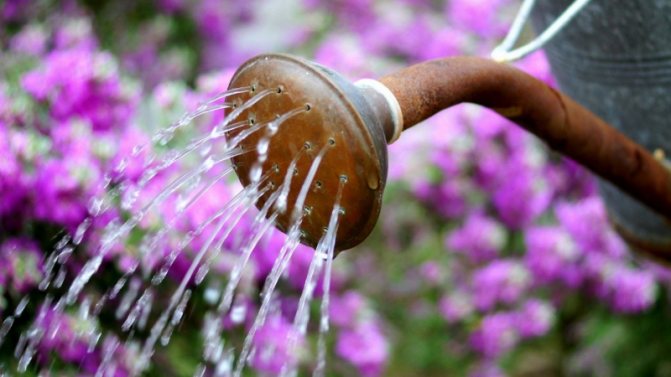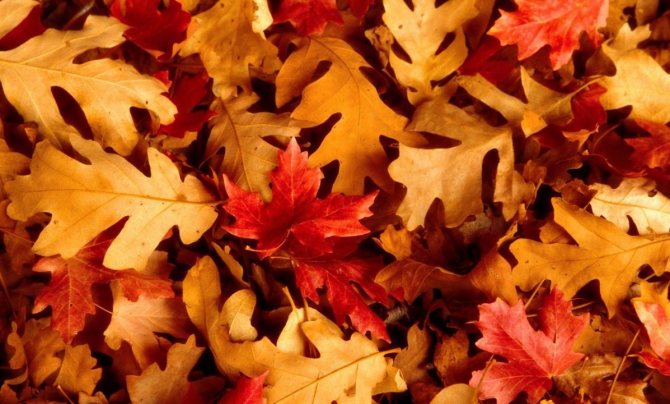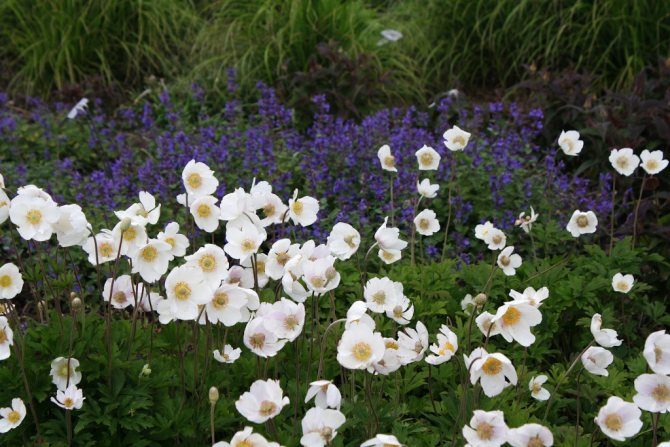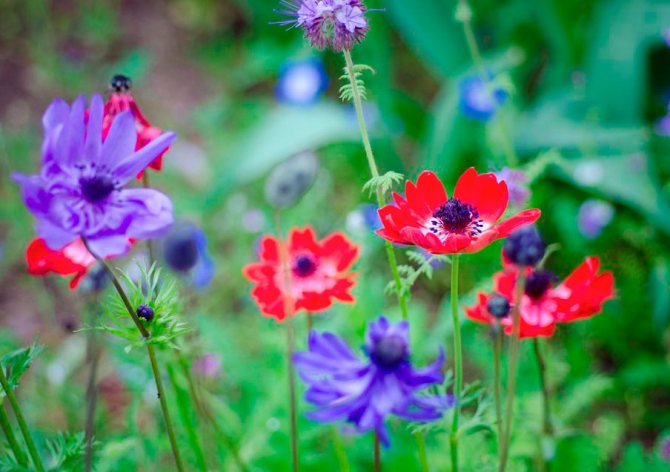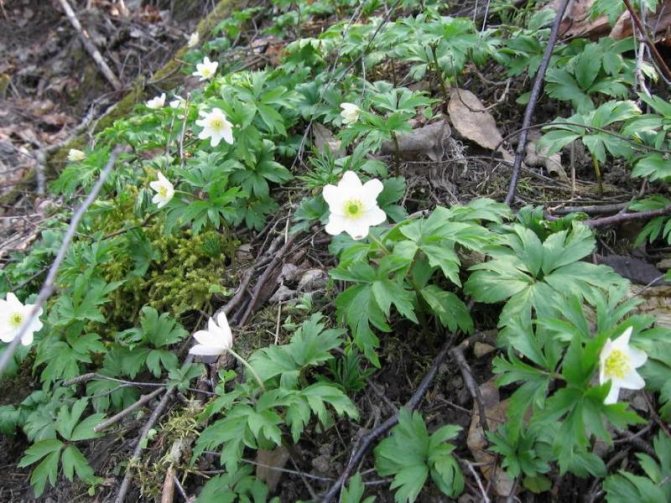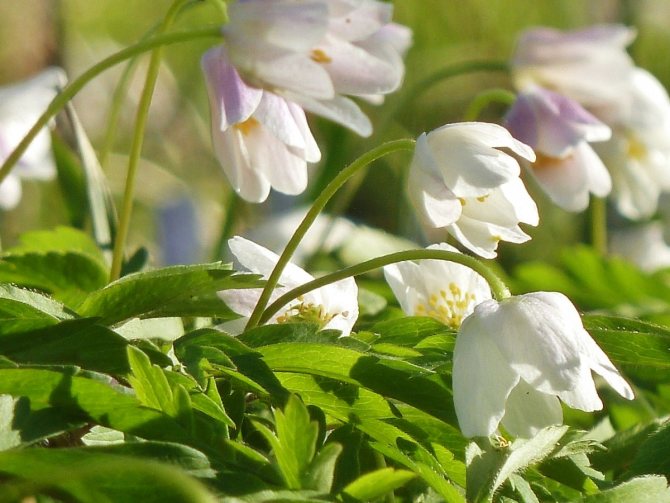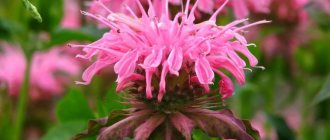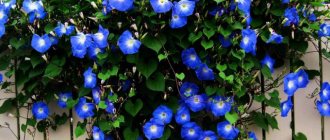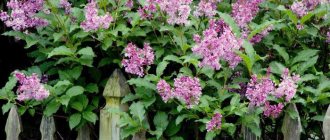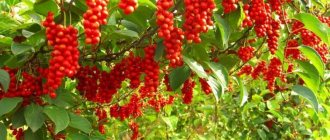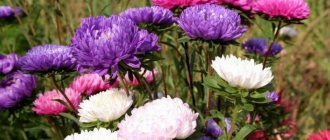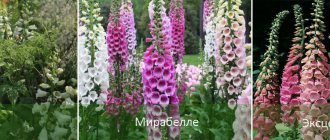The crown anemone species is native to the Mediterranean. There she blooms early and is considered the queen of the spring garden. We can achieve flowering of anemones at the beginning of the season by sprouting tubers at home and only with the onset of stable heat, planting a flower on a flower bed. If from the very beginning the crown anemone was cultivated in the ground, the first buds will appear not earlier than the middle of summer.
Anemone de Caen is distinguished by probably the most beautiful flowers. It is difficult to grow it, for the winter the tubers need to be dug up and stored at a positive temperature, but the catchy beauty of the buds leaves no one indifferent.
Anemones: description of flowers, varieties with photos and videos
Anemone belongs to the Buttercup family. It is found in temperate regions on the plains and in the mountainous regions of both hemispheres. All species and varieties bloom in different ways and at different times of the year, which confuses even experienced gardeners.
By flowering time, anemone is divided into spring and summer (or autumn). This difference is due to several factors, the first of which is the species and variety, and the second is the region where the flower grows. Spring ones are distinguished by grace and a wide range of pastel shades. Spring anemones are ephemeroids, that is, the cycle from aboveground flowering is short - they bloom in May and from July they pass into a dormant stage.
Popular species and varieties
Among experienced gardeners and amateurs, 3 decorative types of anemones are popular:
| Species / varieties | Short description |
| Kind: Anemone tender (A. blanda) Main varieties:
| Anemone tender - a miniature plant, no more than 10 cm tall. The name comes from the color scheme - delicate pink, white, lilac shades. Early chamomile flowers. They begin to bloom in April and flowering lasts about 3-4 weeks. Among the advantages is unpretentiousness. A. Blanda grows in any soil. Ideally, plant it along with large perennials that bloom in May, when the anemone leaves. Thus, you can get a blooming flower bed from early spring to late autumn. Disadvantages - low germination rate. From 10 planted tubers 2-3% germinate. |
| Species: Anemone crown (A. coronaria) Varieties:
| Crowned anemone blooms 2 times a year - in early summer and autumn. The height of the bushes is 20-50 cm. Only experienced gardeners are taken to grow it, since the crown is considered the most capricious among all types of anemone. Despite her beauty, she does not like the sun, but does not grow in the shade either. Requires moisture, but does not like showers. All these "whims" have arisen due to the fact that the homeland of A. Coronaria is the Mediterranean and on the territory of the post-Soviet expanses it is not comfortable for it. |
| Japanese anemone (A. japonica) | Large perennials, whose powerful root system is well branched. They bloom from early summer to late autumn, before the onset of the first cold weather. This is a versatile plant that adapts to any soil and is not whimsical to neighbors in a flower bed. It is recommended to plant the Japanese anemone for beginners, as it quickly takes root and does not disappear if you forget to water it or fertilize it incorrectly. |
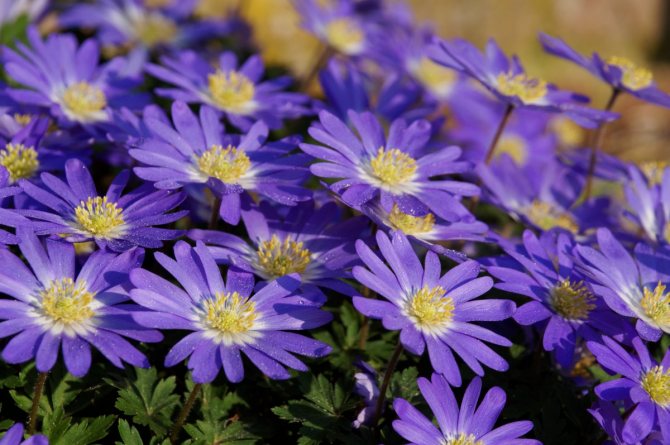
A. blanda
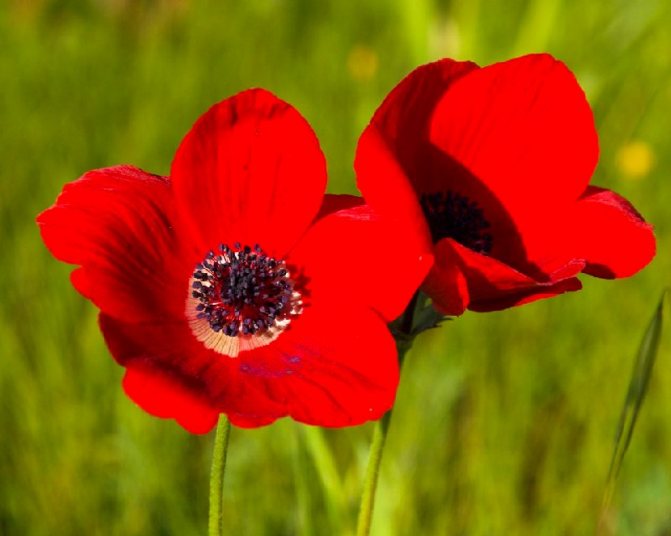

A. coronaria
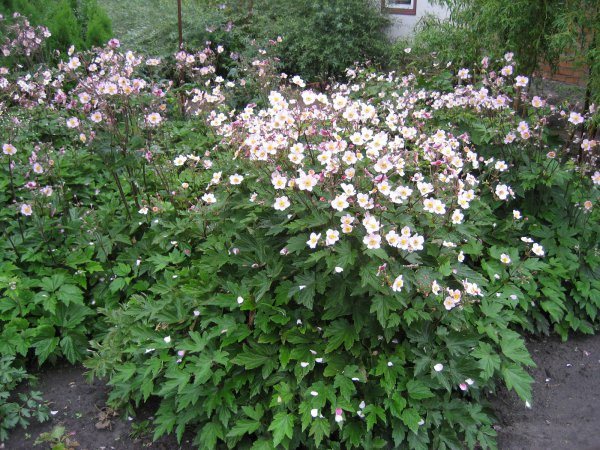

A.japonica
Among all species and varieties, there are completely unpretentious plants, and there are those that require special care and certain conditions for growth and development. This difference is explained by the fact that some anemones have rhizomes, while others have tubers. Species with rhizomes are easy to grow, and mistakes in the care of tuberous anemones lead to serious consequences.
It is recommended to choose a type for planting based on the climate:
- in Moscow suburbs almost all types of this plant can be grown;
- on the Ural - forest, crown, Japanese;
- in Siberiawhere the temperature in winter is low, it is better to give preference to species with high frost resistance - Anemone hupehensis, Amemone x hybrida, Anemone sylvestris.
Appearance
Anemones are herbaceous perennials, rhizome or tuberous, with vertical pagons from 30 cm to 80 cm in height.
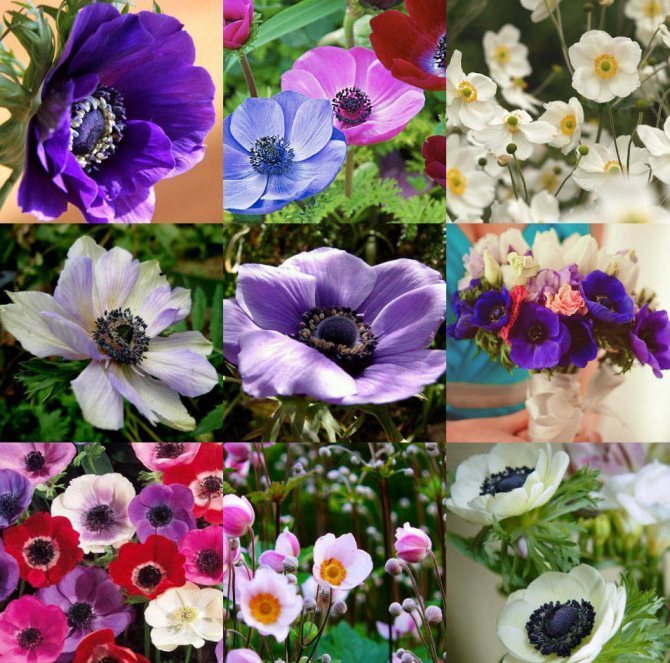

Basal double trifoliate or pinnately dissected leaves on elongated petioles are collected in a rosette, stem leaves are few in number.
Flowers with a circumference of 3-8 cm are solitary or less often grouped in a semi-umbellate inflorescence.
The colors of the petals are different - from white to pale pink, lilac, blue and scarlet. Many terry and semi-double forms and varieties have been bred.
The fruits are similar to miniature nuts, naked in some species and pubescent in others, often adapted to spread by the wind, occasionally by animals.
Most anemones are winter-hardy, tolerate cold well and practically do not freeze out.
They are popular in landscape design, used for planting in rock gardens, mixborders, borders, for decorating parks and home gardens.
Choosing a place for planting and preparing the soil
It is important to ensure proper fit and care of the anemone. To do this, you need to perform several activities:
- Dig up the soil after the winter season in order to destroy the parasites and larvae that hibernated there.
- Before planting, the soil must be fertilized with organic fertilizing. You can use banana peel infusion or compost.
- With regard to the place, it is better to choose partial shade, because anemone does not like shade, but they also do not feel comfortable in the sun.
- The soil is mixed with sand - this is the ideal soil for anemone.
Where is the best place to plant a flower?
Planting and caring for de Caenne anemone largely depends on the location in the garden. This plant prefers an open space that is spacious and somewhat shaded. This delicate and fragile flower, although it is called an anemone, however, does not tolerate drafts and wind at all, which is important to consider when choosing a place for planting.
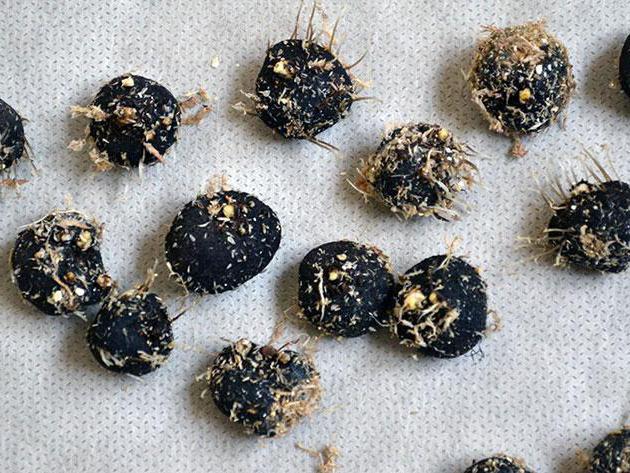

The bright rays of the sun also negatively affect the plant, therefore, it is best to choose a place that is sheltered from the wind and located in a little shade. It is better to plant the de caenne anemone on a small hill, preferring light and loose soil. The water should not stagnate, therefore, a good drainage layer must be made before planting.
Landing
Planting anemones is no different from other flowers. The main conditions are prepared seedlings or rhizomes and soil fertilized with organic matter.
Sowing seeds - seedlings and their preparation
It is difficult to grow anemones from seeds due to the low germination rate. If you choose good quality fresh seeds and sow them in good soil, then perhaps a quarter of them will sprout. This method is used extremely rarely.
To increase germination, experts recommend stratifying seeds. This is the process of cold treatment of seeds. The seeds are mixed with sand in a 1/3 ratio and sprayed with water daily. When they swell, soil and top dressing are added to them in the container. When the sprouts hatch, they need to be taken out into the snow and covered with sawdust.
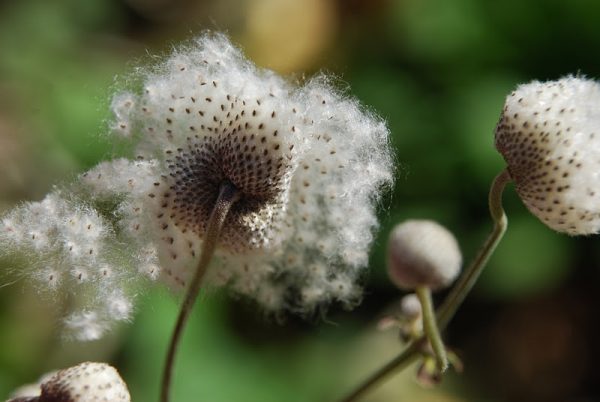

Anemone seeds
Landing in the ground
Tubers or ready-made seedlings from seeds are planted in the ground. To plant the tubers, you need to correctly determine the growth point. To do this, they are placed in water, and after swelling, a tubercle will be visible, from which the stem will break through.
If there are doubts about the location of the growing point, then it should be borne in mind that the top of the tuber is always flat, so they must be planted down with the sharp end.
Care rules
Like any plant, anemone requires care. The key to success is the right place and timely watering.
Watering, illumination
These flowers require mandatory watering in dry, sultry weather. One of the conditions for a beautiful flower bed with anemones is to provide moisture. You can use drainage or mulch to maintain optimal moisture, because too much moisture will also negatively affect the plant.
Autumn feeding is carried out with complex mineral fertilizers, therefore, for the normal growth of anemone, the whole spectrum of salts, acids, vitamins and minerals is needed.
As for the illumination, it is enough to plant the plant in partial shade and the sun and daylight will be enough for it.
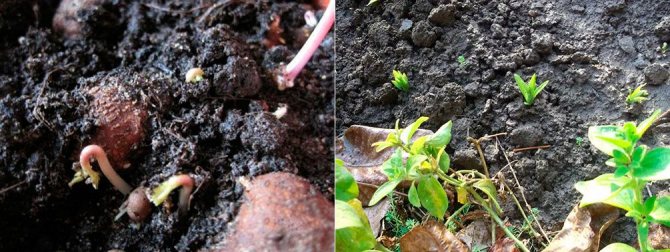

Young plants of anemone are the most demanding for watering.
Features of spring care
In the spring, when it is not yet very hot, the flowers are watered once a week. If varieties that bloom in spring are planted, they need to be fertilized with organic matter. Manure is not used for these flowers. The best option is compost harvested earlier or fertilizers prepared with bananas or onion peels. These foods include many vitamins and minerals that are needed to maintain a good quality soil that's good for anemone.
Features of summer care
In summer, watering is carried out daily after sunset so that moisture is kept at night, which will be enough for the plant the next day. There is no need to water the anemone during rainy season.
In summer, from time to time, it is recommended to get rid of them as the weeds grow, because they absorb useful substances from the soil. It is also necessary to loosen the soil at least once every 2 weeks. This is done in order to saturate it with oxygen.
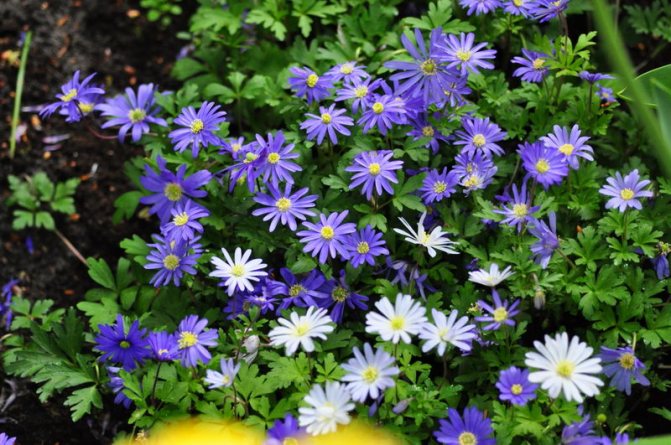

Autumn care
Autumn is the time when plants need to be prepared for the winter season. After flowering, you need to cut off the tops, dry the tubers and place them in the sand. The best place for wintering is a balcony or basement.
There is another option: when the tubers are left in the flowerbed, but at the same time they are covered with leaves or sawdust so that they do not freeze during frosts.
Winter preparation, winter care
To prevent the plants from dying from the cold in winter, they need to be covered with leaves. The frost resistance of a plant depends on the variety and type:
- anemone tender and coronary withstand up to -10 C, so for the winter it is better to dig them up and place them in a container with peat or sand;
- japanese anemone survives at a maximum cold of -30 C;
- frost resistance Hubei anemone up to -35 C.
Flowering care
During the flowering period, special care is not needed - watering, loosening the soil and killing weeds. Spraying from parasites is carried out as needed. After flowering, the dried tops must be carefully trimmed.
Reproduction
The plant reproduces in several ways:
- Tubers (description above).
- Seeds (description above).
- By dividing a bush or rhizome... In early spring, when there is no longer frost, the root is dug up and modules 5 cm long are separated from it. It is important that each element has a kidney. Then they are placed in loose and pre-fertilized soil.
Rhizome division is made only from mature plants that are more than 4 years old.
It is best to propagate anemones in spring by root suckers or seeds sown closer to winter.
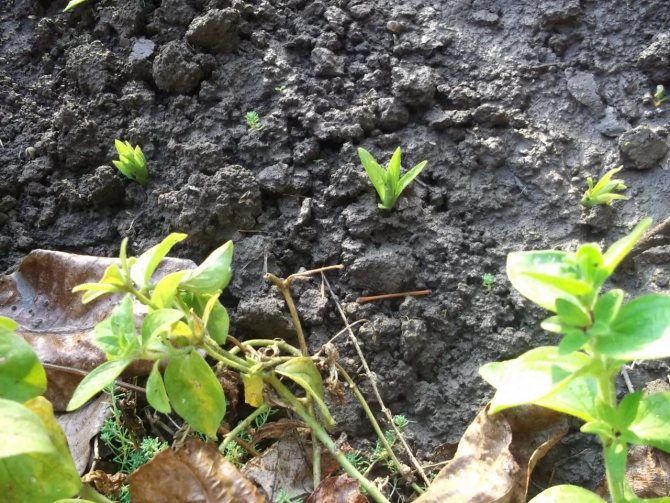

Anemone seedlings
Spring types of anemone
1 of 4
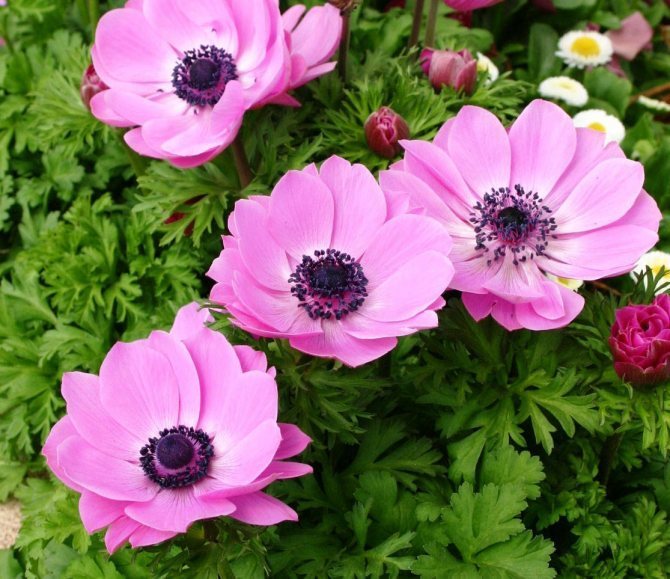

Anemone multi-dissected - perennial 15-50 cm tall with expressive pinnately dissected emerald-colored leaves and small flowers up to 4 cm in diameter, which bloom from early spring to mid-summer. The variety Pink silk with delicate petals is especially attractive, although other forms with lilac, yellow, white flowers are also decorative.
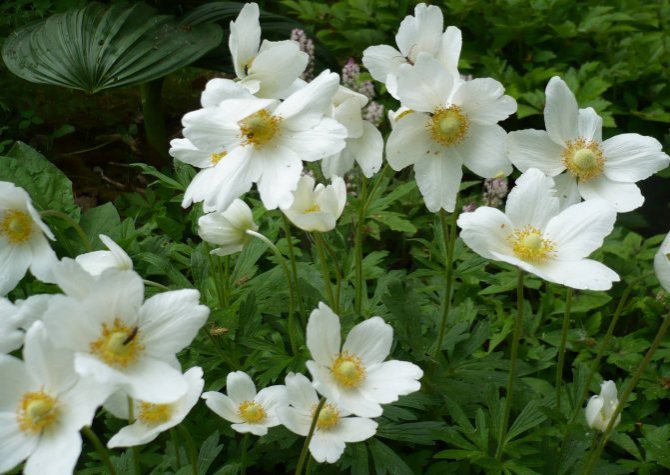

Forest anemone is a herbaceous plant with straight pubescent stems about 50 cm tall with whorls of two-, three-part leaves covered with fluffy hairs and white or cream flowers with a circle of 5-7 cm. Beautiful forms of open ground with large and double corollas have been bred.
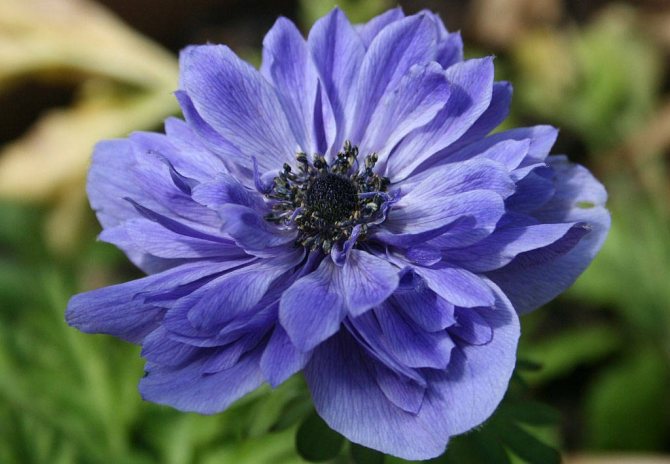

Terry blue anemone is a popular variety in garden floriculture with bright dark blue flowers.
Diseases and pests
Depending on the type of anemone, it can be capricious or unpretentious. Gardeners sometimes have difficulty growing flowers. Let's consider the most common problems that can arise:
- Viral diseases can be manifested by mottling of foliage, it becomes brown in color and growth slows down. In this case, diseased plants must be destroyed so as not to infect the rest.
- If a black bloom appears on the bottom of the leaves, and white on top, this indicates downy mildew... This often occurs when there is poor heat transfer, for example, when growing plants in a greenhouse. It is recommended to establish a ventilation, irrigation and lighting system.
- When attacks aphid, the leaves turn yellow and curl. When touched, you can see a sticky coating. Chemical preparations can save the anemone - Antitlin, Tobacco dust, Actellik.
- Injection nematodes Are small worms that infect the leaves and trunk. To get rid of them, you need to irrigate the plants with Fufanon or onion infusion (2 kg of chopped onions in a bucket of water, leave for 2 days, strain and spray).
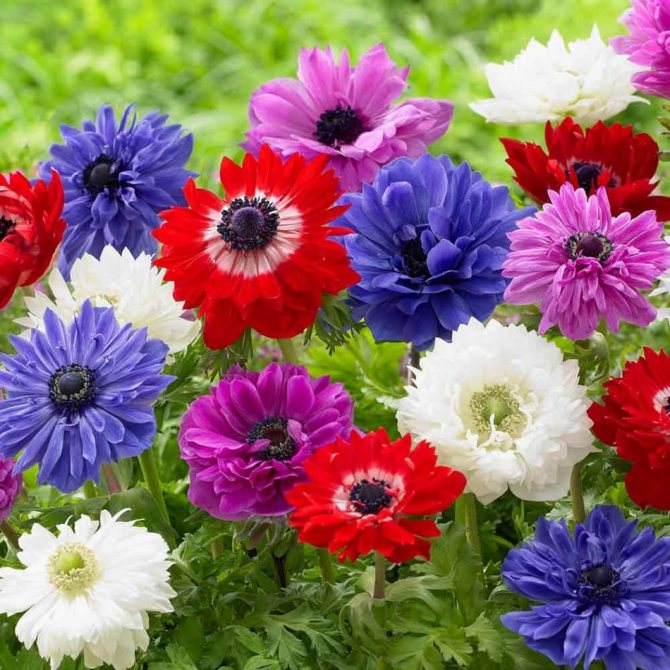

Brigid Mixed
Healing properties
The anemone flower is used in folk medicine due to its properties:
- has antifungal effect;
- stops the growth of cancer cells;
- thins blood, strengthens blood vessels;
- has anti-inflammatory and disinfecting properties.
Infusions are used for cardiovascular diseases, pneumonia, pathologies of the digestive system. When using products based on anemones, you need to be extremely careful, because it is toxic. It is preliminarily recommended to consult with specialists so as not to harm health.
How to grow anemones - gardeners reviews
For more than 10 years in the country I have been growing tender anemone. It begins to bloom early and after the first frost it pleases with a beautiful flower bed. For the winter, I do not uproot the tubers, but cover them with agrofibre or leaves. Propagated exclusively by rhizome. They take root well.
Irina Tishchenko, Moscow
Our winters are not cold, so I don't pull out anemone. I have several varieties of Japanese and crown anemone growing. Crown grows to a maximum of 20 cm, but blooms well. I water it every day, because it rarely rains in summer.
Nadezhda Kovtun, Yeisk
Summing up, it should be noted that the anemone flower has about 170 species, each of which includes many varieties. You can grow anemone in any climate and at any time of the year, the main thing is to choose the appropriate plant.
Do I need to dig up anemones for the winter or not
Varieties of anemone, which completely stop growing in the summer, need to provide a dormant regime. To do this, they are dug up in July-August and stored in a dry, ventilated room at a temperature of about 20 ° C. The planting material should dry well. Already in the fall, it is poured with wet sand and stored in the basement, where a temperature of about 4 ° C is maintained.
Digging up anemones for the winter or not depends on how frosty the winter is in the region. With a good shelter with spruce branches or mulch, plants will not die even in a 20-degree frost, but they may not survive a tougher winter. When digging, the planting material should be sorted out immediately. All spoiled and damaged parts are removed. To avoid the spread of mold or fungi, rhizomes and tubers are recommended to be washed in a weak solution of manganese or fungicide. After that, they are laid out in the shade to dry.
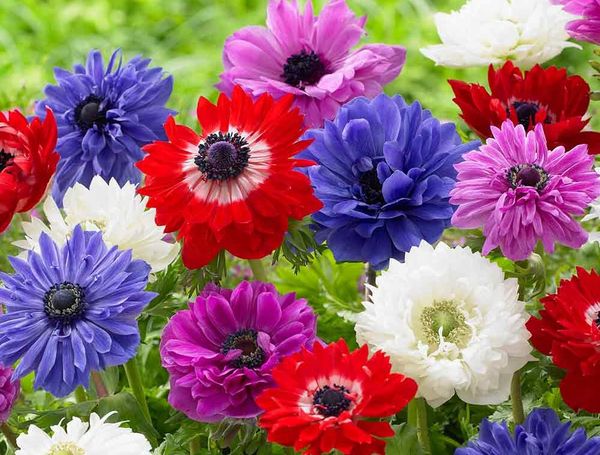

Anemone


